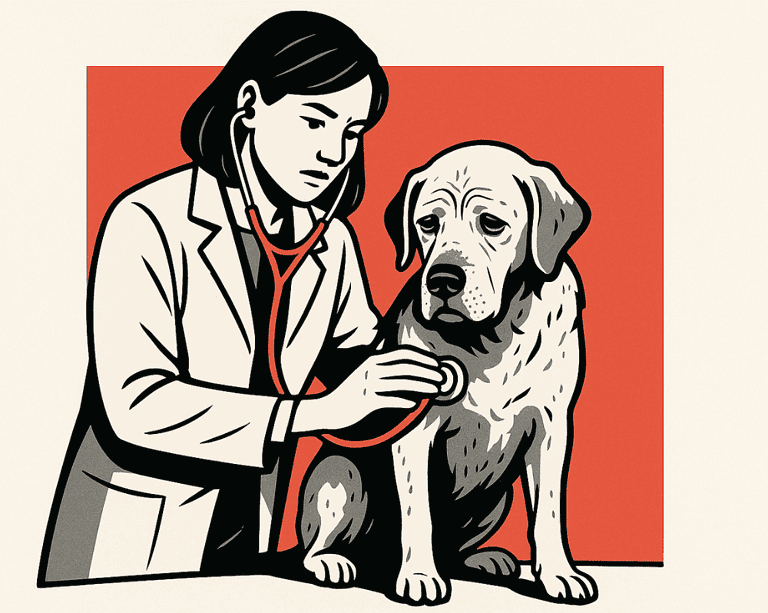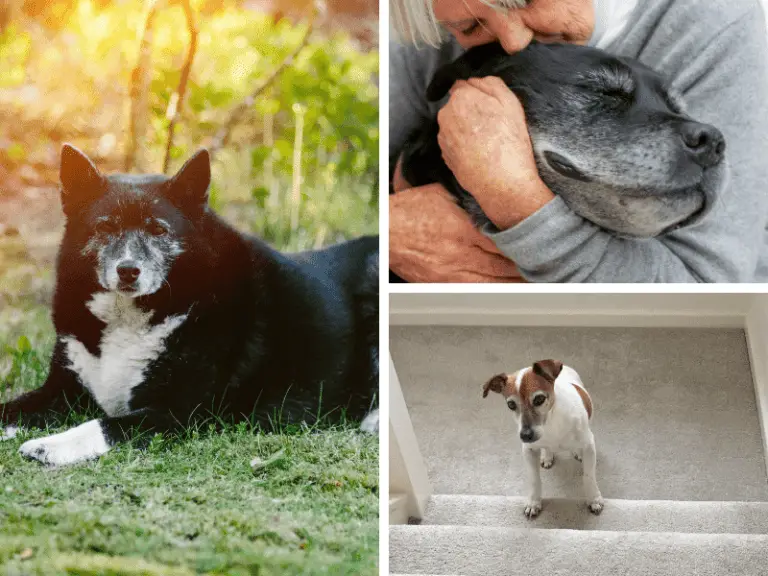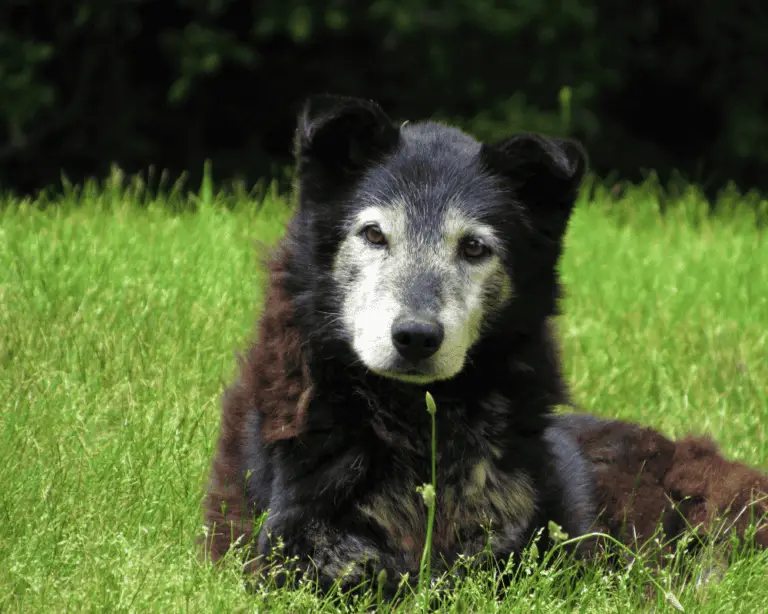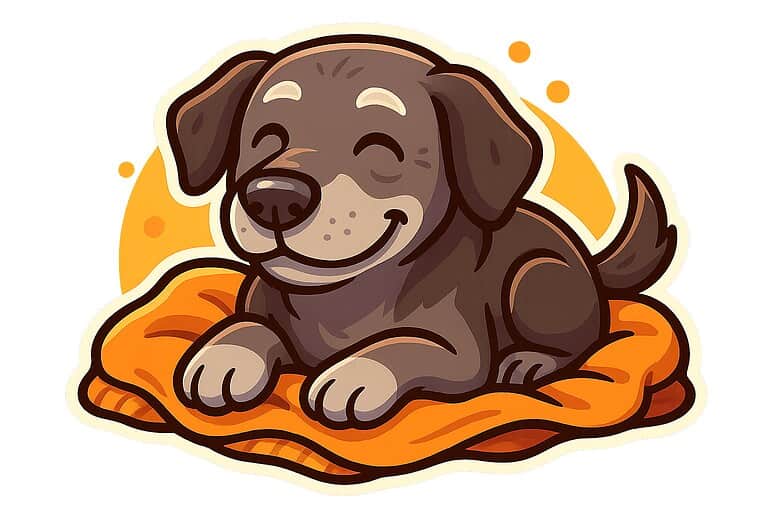Checklist: How to Tell if Your Senior Dog Has Anxiety
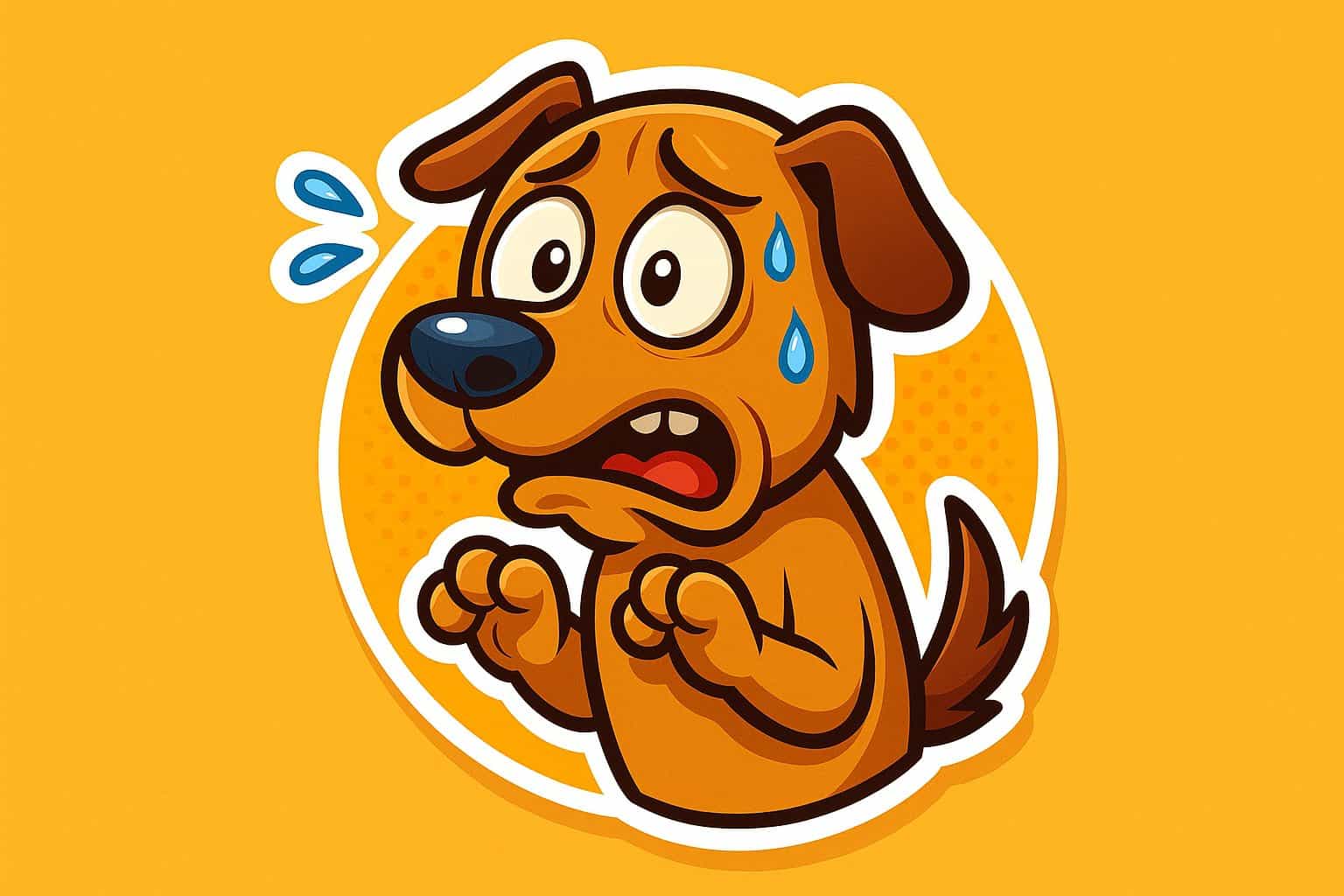
As your dog gets older, you might spot changes in their behavior that just don’t fit their usual self. Maybe your once-confident buddy seems restless at night, or they’re suddenly glued to your side more than before.
These shifts in senior dogs often point to anxiety. It’s a lot more common in older pups than most folks realize.
Dogs, much like us, can develop anxiety as they age. Things like fading senses, aches and pains, or changes in their brain chemistry all play a part.
If you’re wondering whether your senior dog’s new quirks are signs of anxiety, there are clear symptoms you can keep an eye out for. Catching these early means you can help your aging friend feel safer and more at ease.
1) Increased Pacing or Restlessness During the Day or Night
Does your senior dog just wander around, never quite settling anywhere? Maybe you’ve noticed them pacing, especially after sunset.
Restlessness and pacing crop up a lot in anxious older dogs. Some walk in circles, roam from room to room, or just can’t relax for long.
Often, this gets worse at night. You might hear their nails clicking on the floor while you’re trying to sleep.
During the day, they might get up from their bed over and over. Sometimes they head to the door, then the kitchen, then back again, with no clear goal.
Some dogs pace because they’re confused or uneasy about their environment. Others do it because something hurts, but they can’t say so.
If your dog used to be calm and now paces a lot, that’s a red flag for anxiety. Try to notice when the pacing happens most.
2) Excessive Panting Without Obvious Cause
Is your senior dog panting hard when it’s cool out and they haven’t been active? That kind of panting—when there’s no clear reason—can be a big clue for anxiety.
Panting usually cools dogs down after a walk or on a hot day. But if your dog pants a lot without those triggers, something else is up.
Anxious older dogs often pant at weird times. Maybe it happens at night when they should be sleeping. Or maybe you spot it when they’re just chilling on the couch.
Anxiety panting tends to be faster and more shallow than normal. Sometimes your dog seems restless or can’t get comfy while panting.
If you see this, look around for changes. Did you move the furniture? Are there new sounds in the house? Even small stuff can set off anxiety in senior dogs.
Take note of when the panting happens. That’ll help your vet figure out if anxiety or something else is behind it.
3) Heightened Startle Response to Sounds or Movements
Does your senior dog jump at noises that never used to bother them? That jumpiness is a classic anxiety sign in older dogs.
As dogs age, their hearing and vision often fade. This makes them more sensitive to surprises—noises or movements they can’t see coming.
Your dog might suddenly startle when you walk into a room or panic at the sound of a car door. Maybe you’ve seen them shake or hide when the doorbell rings.
Sudden noises like thunder, fireworks, or even the vacuum can really set them off. Aging changes how dogs process the world, so surprises feel scarier.
You might see pacing, panting, or whining after they’re startled. Some dogs even have accidents in the house when they get spooked.
If your dog’s startle response gets worse, it’s worth a chat with your vet. There could be something else going on underneath the anxiety.
4) Unexplained Vocalizations Like Whining or Barking
Has your senior dog turned into a chatterbox? Maybe they’re whining in the middle of the night or barking at nothing during the day.
This uptick in vocalizing often means anxiety. Your dog could be trying to tell you they’re confused or feeling off.
Anxious older dogs bark or whine for no clear reason. They might make noise when they used to be quiet, especially at night.
The barking usually isn’t directed at anything specific. It’s just your dog’s way of expressing their stress or uncertainty.
You might notice the whining gets worse when your dog seems disoriented. That’s even more common if they’re starting to show signs of cognitive decline.
If your quiet dog suddenly won’t stop talking, anxiety might be to blame. The vocalizing often ramps up when they’re overwhelmed by changes.
Try to spot when these sounds happen most. Is it when you leave, or around bedtime?
5) Avoidance of Interaction or Hiding More Than Usual
Is your once-social senior dog suddenly spending more time under the bed or behind the couch? That withdrawal can signal anxiety.
Maybe they don’t greet you at the door anymore. Or they skip family time and avoid their favorite ear scratches.
Anxious senior dogs often retreat to quiet spots when they’re overwhelmed. Changes in hearing or vision can make normal household sounds feel scary.
If your dog suddenly prefers being alone, anxiety could be the reason. It’s kind of like when you need alone time after a rough day—dogs get that too.
Sometimes dogs hide when they’re not feeling well, so check with your vet if this comes on suddenly.
Notice when your dog hides most. Is it during loud activities or when guests show up? Spotting patterns can help you find their triggers.
6) Trembling or Shaking When Left Alone
Does your senior dog start trembling as soon as you grab your keys? This kind of shaking isn’t about excitement or being cold.
Separation anxiety often hits harder as dogs get older. Your dog might feel extra vulnerable when you’re gone.
You might notice the shaking starts before you leave. Sometimes it kicks in when you put on your coat or pick up your bag. Some dogs shake the whole time you’re out.
Usually, they tremble near doors or windows, watching for you to come back. This type of shaking stops once you’re home again.
If your dog used to be fine alone and now shakes, their anxiety might be growing. Their aging brain just doesn’t handle stress the same way.
If you see this, your dog needs help managing their nerves. Try building a calm routine before you leave to ease their worry.
7) Loss of Interest in Favorite Activities or Toys
Has your playful senior dog suddenly lost interest in their favorite tennis ball? That shift can be a pretty clear sign anxiety’s creeping in.
When dogs feel anxious, they often pull back from things they used to love. Your dog might ignore their toys or show zero excitement for fetch.
Anxiety saps motivation, just like stress does for us. Maybe your dog walks past their toy basket without a second look.
If your senior dog acts disinterested, think about what’s changed around them. Did your routine or family structure shift recently?
Watch for when this happens most. Is it certain times of day or in specific situations? That’ll help you spot what’s stressing them out.
8) Clinginess or Following You Around Constantly
Is your senior dog suddenly glued to your side, even following you to the bathroom? That clinginess often screams anxiety.
Your once-independent pup might now panic if you’re out of sight. Pain, hearing loss, or vision loss can make them crave your comfort.
Dementia can play a part too. Confused older dogs often stick close for security.
If your dog used to chill in another room and now shadows you everywhere, take note. It’s even more concerning if they seem restless or pace as they follow.
You might also hear whining or see panting along with the clingy behavior. Those are extra signs anxiety’s in the mix.
Don’t just chalk it up to old age. Your dog’s trying to tell you something about how they feel.
9) Changes in Sleep Patterns, Such as Difficulty Settling Down
Does your senior dog pace at bedtime instead of curling up? Sleep changes are super common with anxiety in older dogs.
Your dog might suddenly struggle to get comfy at night. Maybe they walk in circles, pant, or just seem restless when they used to settle in easily.
Some anxious seniors flip their sleep schedule, napping all day and staying up all night. Sometimes they whine or pace while you’re trying to sleep.
Nighttime anxiety can be extra rough. Your dog might see your sleeping as separation, which adds to their worry.
You might find them getting up a lot during the night or wandering around looking confused.
If your once-solid sleeper now tosses and turns, anxiety could be the reason. Notice when these changes started—sudden shifts usually mean something’s up.
10) Accidents in the House Even If Potty Trained
Has your well-trained senior dog started having accidents indoors? That’s one of the biggest signs of anxiety in older dogs.
When dogs feel anxious, their bodies react just like ours. They might lose control of their bladder or bowels, even if they’ve been house-trained for years.
Maybe you spot accidents after loud noises or when you leave. It’s not stubbornness or forgetting.
Anxiety can make it tough for dogs to hold it in. Their nervous system just gets overwhelmed.
If your senior dog starts having accidents, don’t scold them. They’re already stressed, and punishment won’t help.
Instead, clean up calmly and look for patterns. Do the accidents happen during storms, when guests visit, or as you’re leaving?
If you see frequent accidents with other anxiety signs, call your vet. They’ll check for medical issues and help you make a plan.
Understanding Anxiety in Senior Dogs
Senior dogs face mental changes that can trigger anxiety in ways younger pups don’t deal with. Age-related cognitive shifts and physical discomfort often bring new fears and worries.
How Aging Changes Your Dog’s Mind
Your dog’s brain changes as they get older, just like ours. These shifts affect how they handle stress and process the world.
Cognitive decline is pretty common. Your dog might forget routines or get lost in familiar places. Sometimes they stand in corners looking confused or forget where their food bowl is.
Memory issues can make normal situations feel scary. Ever notice your dog suddenly anxious about things that never bothered them? It’s because they can’t remember if something’s safe.
Sleep patterns change too. Your senior dog might nap more in the day but feel restless at night. That lack of good sleep makes stress harder to handle.
Their senses fade as well. Poor hearing or vision can leave your dog feeling unsure about their surroundings.
Common Causes of Anxiety in Older Dogs
Plenty of things can trigger anxiety in aging dogs. Knowing the causes helps you catch problems early.
Physical pain is a big one. Arthritis, dental issues, or other health problems can make your dog anxious. If you see sudden anxiety, get your vet to check for pain.
Cognitive Dysfunction Syndrome hits a lot of senior dogs. It’s a bit like dementia in people. Your dog might get confused, lose track of familiar faces, or wander aimlessly.
Routine changes get harder for older dogs. Moving furniture, new family members, or switching up feeding times can all trigger anxiety in seniors who used to roll with the punches.
Losing their senses makes things worse. When your dog can’t see or hear well, they lean more on their other senses. That makes them more likely to startle or feel nervous.
What to Do If You Suspect Your Senior Dog Has Anxiety
Start by making a vet appointment to rule out medical causes. You can also try simple calming techniques at home to help your dog feel more secure.
When Should You Call Your Veterinarian?
Call your vet as soon as you spot anxiety symptoms in your senior dog. Medical issues often look a lot like anxiety in older dogs.
Schedule an appointment if your dog shows:
- Sudden behavior changes
- Excessive panting or drooling
Restlessness at night can be a warning sign. Loss of appetite or increased clinginess might also mean something’s up.
Vets check for pain, inflammation, or other health problems. Senior dogs deal with these issues a lot, and they can make your buddy feel anxious or unsettled.
Don’t wait around for weeks hoping the symptoms will fade. Acting early tends to help, whether it’s a medical problem or anxiety.
Maybe you’ve noticed your dog seems more nervous than before? That shift could mean there’s an underlying health concern that needs a closer look.
Your vet might run blood tests or do a physical exam. They can also suggest anxiety treatments that work well for older dogs.
Simple Ways to Help Your Senior Pup Feel Calmer
You can try a few gentle methods to ease your dog’s anxiety while you wait for your vet appointment.
Create a calm environment:
Keep a consistent daily routine. Give your pup a quiet, comfortable spot to sleep.
Use soft lighting in the evening. Sometimes playing calming music or even white noise can help.
Physical comfort helps too.
Try a weighted anxiety vest or just add some extra-soft blankets to your dog’s bed. Some dogs actually feel safer in smaller, enclosed spaces like crates.
Mental stimulation can reduce worry.
Puzzle toys work wonders for some pups. Gentle training sessions or short walks might help if your dog enjoys them.
Notice your dog pacing at night? Move their bed closer to yours, or leave a worn piece of your clothing nearby.
Avoid forcing interactions with new people or pets. Your anxious senior needs time to feel secure again.
I suggest keeping a log of when anxiety symptoms show up. This record gives your vet a better shot at finding the right treatment plan.

